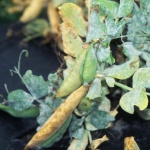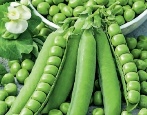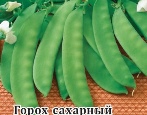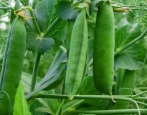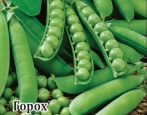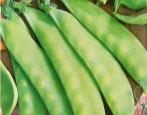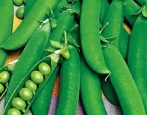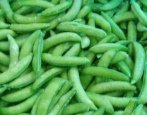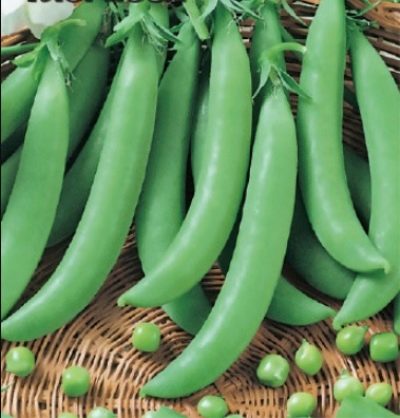
- Year of approval: 2014
- Ripening terms: mid-season
- View: peeling
- The period from germination to technical ripeness: 56-57 days
- Stem length, cm: 60-70
- Sheet: normal type, medium to large leaves, light green to green with a grayish tinge and waxy coating
- Stipules: medium to large with a waxy coating and very little mottling
- Flowers: white, large
- Parchment layer: available
- The height of the location of the first bean above the soil surface: 30-40 cm
Gloriosa peas are ideal for creating dishes, therefore they are quite popular among summer residents. Having paid a little attention to it, providing high-quality feeding, even a novice gardener can get a decent harvest.
Breeding history
This variety can be considered relatively young, since it was allowed to be used on the territory of our country and entered into the State Register in 2014. The variety belongs to shelling.
Description of the variety
If we talk about the output of green peas, then with Gloriosa this figure is 50%.
The fruit of the variety will be sweet and large when it is provided with high-quality watering and timely nitrogen fertilization. It is impossible to allow the soil to dry out; it is better to apply mulching of the beds.
Characterization of the appearance of plants, beans and seeds
Gloriosa shoots reach an average length, usually 60-70 cm.
The foliage of this variety is of the usual type and may be medium in size or large. The shade is light green and with a grayish tint, there is a waxy coating.
The flowers form large when blooming, they are white. The first fruits grow from the ground at a level of 30-40 cm.
Pods reach a length of 7-8 cm, slightly or simply curved in shape. The apex is pointed. When the pods are ripe, they turn light green or green.
Up to 9 beans are formed inside the pod, they are small or medium in size.
Purpose and taste
Fresh Gloriosa beans must be used while they are at the stage of milk ripeness. Suitable for freezing and canning, very tasty, tender and sweet when fresh.
Ripening terms
In terms of ripening, this is a mid-season variety that reaches technical ripeness in 56-57 days. The beans ripen together.
Yield
The average yield is 45-52 kg / ha.
Growing regions
Gloriosa is grown mostly in the central part of Russia, but you can get a good harvest in other regions.
Growing and care
It is necessary to sow seeds in the ground from the end of April to 10 May. The ideal arrangement for the arrangement of the bushes is 30x15 cm. The seed material is immersed 3-4 cm, and it is provided with regular watering. It is better to choose a sunny area where there is no draft.
After the first shoots appear, it will be necessary to put supports for the further development of Gloriosa.
Fertilization for Gloriosa must be adapted not only to the needs of the plant, but also to the current state of the soil. First of all, drugs rich in phosphorus and potassium are used. If the crop is grown for seed, foliar feeding is also allowed. For this purpose, preparations are used that are rich in various microelements.

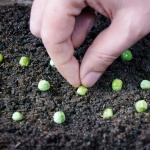
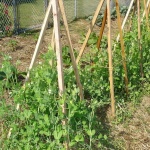

Soil requirements
For Gloriosa to thrive, she will need a fertilized, drained soil with a neutral pH reaction.
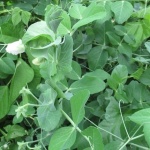
Required climatic conditions
This pea variety belongs to cold-resistant varieties.
Disease and pest resistance
Gloriosa has excellent resistance to ascochitosis, since the variety is rarely affected by it. There is a good immunity to fusarium.
Timely treatment with fungicidal preparations of a wide spectrum of action helps from other diseases when growing peas of this variety. Processing is carried out several times a season, until the beans ripen.
For pests, including aphids, which infect Gloriosa most often, it is better to use insecticides. From folk remedies, neem oil and garlic infusion have proven themselves. These products can be used only before signs of insect infestation appear.
